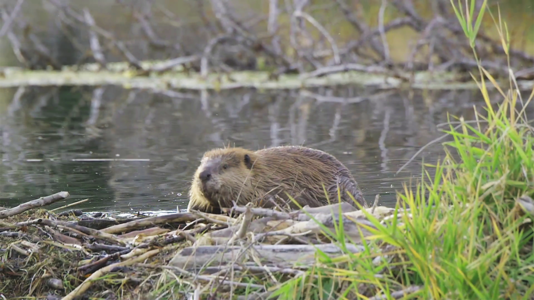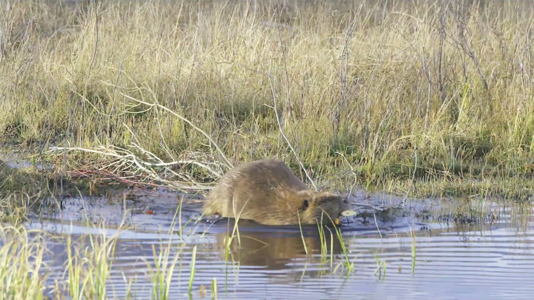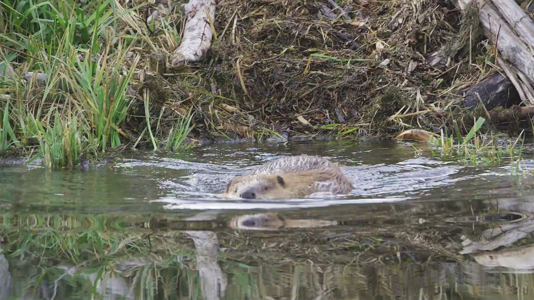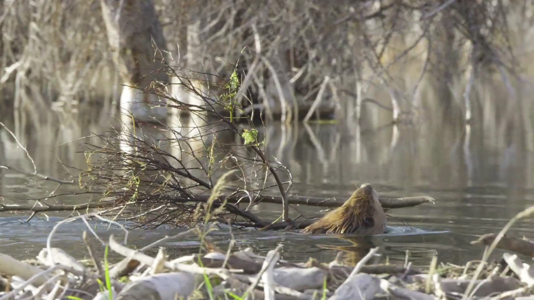This is a slightly less blame-filled report of beavers in the arctic. I like “Passengers” a little better than “Drivers”.
Month: September 2024
Sometimes it feels like things haven’t changed at all for beavers. I mean two probably unnatural beaver deaths were just found in St Helena last night for heavens sake, But sometimes it feels like we’re in a whole new world.
Volunteers help engineer dams, promote beaver habitats in Bernheim Forest
BULLITT COUNTY, Ky. — Bernheim Forest is working to create healthier waterways and habitats in the commonwealth.
The forest is teaming up with Louisville Metro’s sewage department and an engineering firm to help foster wildlife habitats.
Engineers with Gresham Smith civil engineering firm, like Kenneth Stewart, are taking their skills out into the wild.
“We design everything water and wastewater related,” Stewart said. “We design water and wastewater plants; we design the piping that goes from the plants to the houses and the subdivisions.”
Stewart and some of his colleagues are taking engineering inspiration from beavers. They are working to build structures similar to a beaver dam with the hopes of strengthening the beavers’ habitat.
Evan Patrick, natural areas manager, is overseeing the Beaver Dam Analog Project and guiding volunteers. He said Bernheim Research Forest advocates for animals who were persecuted, such as beavers.
“These are species that play really important ecological roles,” Patrick said. “They fill ecological niches, and they provide ecological services. And when these species are either hunted or trapped, out of these areas, those roles go unplayed and it can create these ripple effects that negatively impact habitats and ecologies.”
Let me just remind readers that Louisville KY is where the beaver animating youth Ian was from who worked so hard to save the beavers out his way and won six scholastic medals for his animating prowess.
Patrick said beavers build dams to stop moving water, which can benefit water quality by filtering out fertilizers and pesticides. The dams also create healthy habitats for many animals, including frogs, turtles and river otters.
Keeping water quality high is important, Patrick added, because Bernheim protects more than 90 miles of streams and is the headwaters of more than a dozen streams outside the area.
“If that rain falls coming down in Bernheim, if those headwaters are in Bernheim, flowing out of our forest and into communities, that impacts not just the wildlife and the folks that work and live here around Bernheim but the communities that live hundreds or even thousands of miles downstream from our forest,” he said.
Bernheim is home to more than 16,000 acres of land. The research forest works to educate people about nature and conservation.
It’s a new world baby. A new world. And we were here to see it dawn.

Hey, do you happen to remember those beaver singers at the festival this year? We’ll they’re taking their show on the road next month.
The Acorn MusEcology Project is a 22-voice choral ensemble based in Sonoma County, California, composing and performing original music that explores our collective role as caretakers in our relationship with our animal and plant brethren and living systems. Concert programs are created to advance the causes of environmental stewardship—toward the rediscovery, healing, and reimagining of a vibrant planet beyond our own time. Sarah Dupre is Music Director. Robin Eschner is Creative Director.
I’m not sure I quite understand this story, but I’m not complaining. Apparently it was inspired by some recent photos from Judy Lehmberg who came across a family in the Tetons doing what beavers do, She is a biology teacher turned photographer and fairly well known. Which is a little confusing, because these photos all look a little blurry to me and I’ve seen plenty of amature beaver photos that are way better?
Beavers: The Engineers of the Wild
 Beavers are famous for being the engineers of the wild, building their own custom dams. Check out this footage to witness them in action
Beavers are famous for being the engineers of the wild, building their own custom dams. Check out this footage to witness them in action
 Wildlife photographer Judy Lehmberg came across a clever beaver going about its day in Schwabacher’s Landing in the Tetons Beavers aren’t particularly rare in these parts, and seeing them is a good sign of a healthy environment. They enhance biodiversity and contribute to the overall health of the areas they reside in.
Wildlife photographer Judy Lehmberg came across a clever beaver going about its day in Schwabacher’s Landing in the Tetons Beavers aren’t particularly rare in these parts, and seeing them is a good sign of a healthy environment. They enhance biodiversity and contribute to the overall health of the areas they reside in.
Is it me or do these photos look blurry? Schwabacher’s Landing in the Tetons have got to be some of the most photographed beavers in the world. Second only to Martinez of course. They don’t usually look blurry.
 Beavers are highly social creatures and rely on bonds within their colonies to survive. They live in family units comprising a mated pair and their offspring. In their groups, beavers have developed efficient ways of communicating via vocalizations, body postures, and scent marking. They may also slap their tails to warn others of danger.
Beavers are highly social creatures and rely on bonds within their colonies to survive. They live in family units comprising a mated pair and their offspring. In their groups, beavers have developed efficient ways of communicating via vocalizations, body postures, and scent marking. They may also slap their tails to warn others of danger.
 Beavers have incredibly strong teeth that are ever-growing. Their teeth have high iron levels, making them sturdy enough to cut through wood. These mammals have also adapted to be suited for aquatic living. They have webbed hind feet that assist in swimming, and their nose, eyes, and ears are all situated on top of their heads to allow for senses while they’re underwater.
Beavers have incredibly strong teeth that are ever-growing. Their teeth have high iron levels, making them sturdy enough to cut through wood. These mammals have also adapted to be suited for aquatic living. They have webbed hind feet that assist in swimming, and their nose, eyes, and ears are all situated on top of their heads to allow for senses while they’re underwater.
Well? Is it me? Have my eyes just gone blurry? Or do you see it too? I suppose it was way early in the morning when she took these and the dim light required a very long shutter speed and that’s why it looks blurry? Rusty Cohn could you explain it for us?
Beavers are most famous for their engineering qualities. These mammals build dams from scratch, using twigs, mud, stone, and other vegetation. Their dams create a pond, providing a safe living space away from predators and with plenty of resources. Beavers build “lodges” in these ponds with underwater entrances where they can rest safely away from other animals and harsh weather.
By constructing dams, beavers create natural wetlands. These new areas allow life to grow and thrive, enriching the local ecosystem. They help purify water, reduce the risk of floods, and provide habitats for a wide variety of wildlife.
Well that’s certainly the truth. And this article ran a couple days on different sites so okay. Spread the good news. Thank you very much.








































